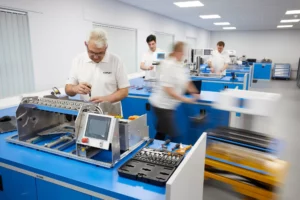Assessing the market impact of transitioning to low global warming potential (GWP) metered dose inhalers (MDIs), new EMA guidance and the associated analytical demands.
Depending on your perspective, it may be exciting, impressive, sobering or stressful to think that low GWP MDIs are expected to become a commercial reality next year.
In 2019, when Chiesi Group announced plans to launch ‘the first carbon minimal pressurised MDIs, the target date of 2025 must have seemed a distant ambitioni. However, recent updates suggest on-track progress with Phase I and IIa trials using HFA-152A as a replacement propellanti,iii. AstraZeneca is similarly successfully through Phase I trials and has commenced Phase III with a combination of budesonide, glycopyrronium and formoterol fumarate in an HFO1234ze formulationii,iii. And just recently GSK added its first public announcement in the area, announcing plans to start Phase III trials of a low carbon version of its salbutamol MDI product Ventolin, using a next generation propellant, in the first half of this yeariv. A new Q&A from the European Medicines Agency on data requirements for the demonstration of bioequivalence (BE) for low GWP orally inhaled MDIs reflects this growing momentumv.
The need for re-formulation is directly associated with the Kigali Amendment to the Montreal Protocol and the associated EU regulation on Fluorinated gases (F-gases), which both require phase down of the production and use of HFCs (hydrofluorocarbons)vi. Alongside these regulations there is also an industry desire to move away from HFCs based on individual company goals to reduce Scope 3 emissions in line with ESG (Environment, Social and Governance) strategies. Either way, the MDI landscape looks set for a seismic shift, and sooner rather than later.
Economics: The ripple effects of Kigali and early reformulation success
Propellants account for a large proportion of MDI manufacturing costs: ~30% in the case of an HFA 134a MDIvii. The potential for fluctuations in market price to directly impact the economics of the MDI market is therefore considerable.
Developed countries are leading the way with respect to implementing the Kigali Amendment and we can already see the associated impact on market price. A 2020 report from the European Commission noted that ‘the price of conventional HFCs on the EU market has been strongly affected by the phase-down’ viii, with HFC costs steady but still ‘several times higher than on the world market’ ix, around that time.
Over coming decades such effects are likely to ripple around the globe as the respective regulations and international agreements are progressively implemented. The HFC market will gradually tighten, and higher prices are inevitable. This phenomenon has been seen before, indeed it could be argued that this was precisely the effect that, ultimately, drove the first major MDI reformulation of the transition away from CFCs. As change accelerates, the componentry associated with HFC MDIs will also become scarcer, putting further pressure on costs.








